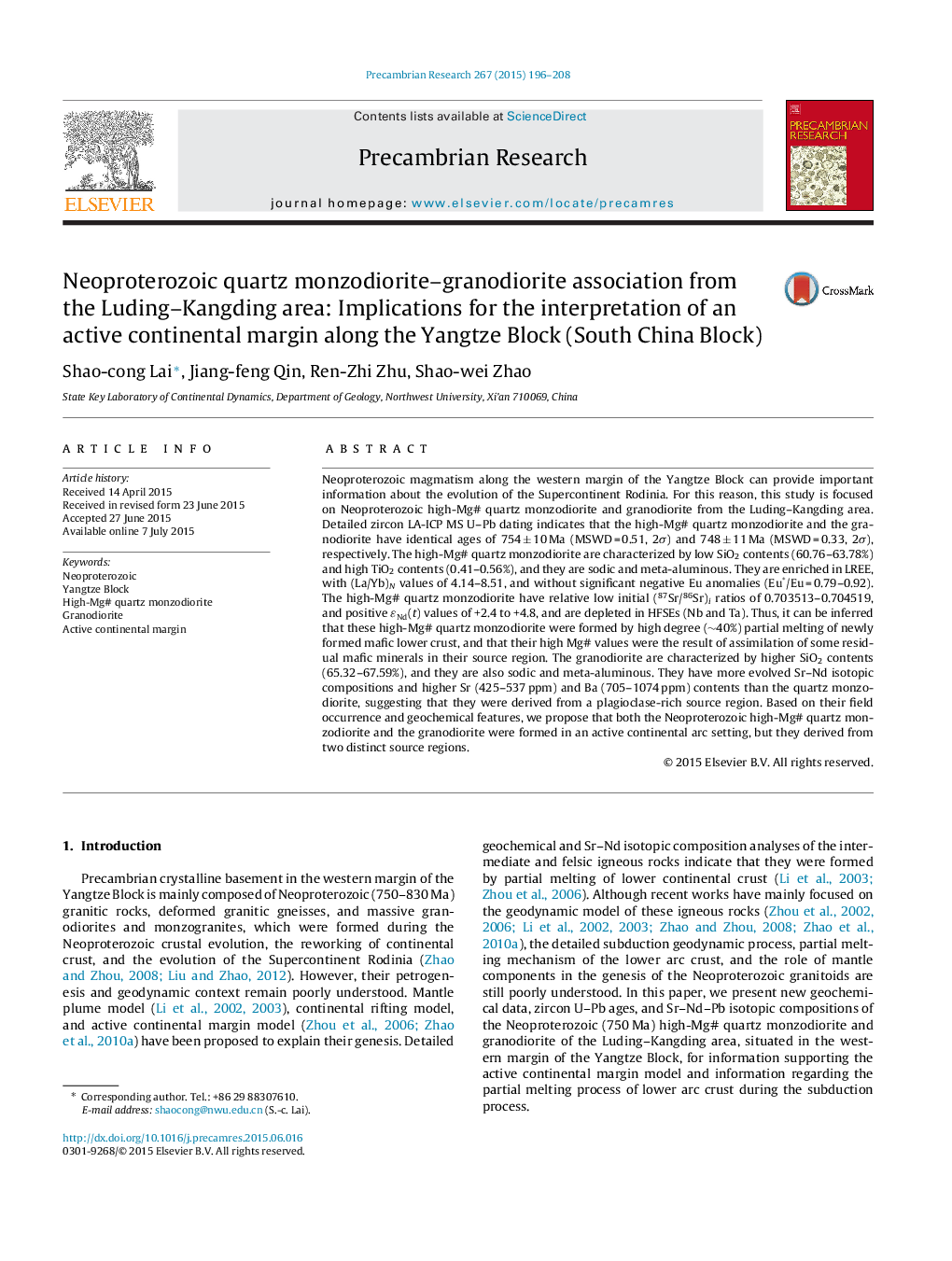| Article ID | Journal | Published Year | Pages | File Type |
|---|---|---|---|---|
| 4722615 | Precambrian Research | 2015 | 13 Pages |
•The 750 Ma Na-rich quartz monzodiorite–granodiorite from the Yangzte Block.•The high-Mg# quartz monzodiorite assimilate some residue mafic minerals.•The adakitic granodiorite were derived from a plagioclase-rich source region.•This association was formed in active continental arc settings.
Neoproterozoic magmatism along the western margin of the Yangtze Block can provide important information about the evolution of the Supercontinent Rodinia. For this reason, this study is focused on Neoproterozoic high-Mg# quartz monzodiorite and granodiorite from the Luding–Kangding area. Detailed zircon LA-ICP MS U–Pb dating indicates that the high-Mg# quartz monzodiorite and the granodiorite have identical ages of 754 ± 10 Ma (MSWD = 0.51, 2σ) and 748 ± 11 Ma (MSWD = 0.33, 2σ), respectively. The high-Mg# quartz monzodiorite are characterized by low SiO2 contents (60.76–63.78%) and high TiO2 contents (0.41–0.56%), and they are sodic and meta-aluminous. They are enriched in LREE, with (La/Yb)N values of 4.14–8.51, and without significant negative Eu anomalies (Eu*/Eu = 0.79–0.92). The high-Mg# quartz monzodiorite have relative low initial (87Sr/86Sr)i ratios of 0.703513–0.704519, and positive ɛNd(t) values of +2.4 to +4.8, and are depleted in HFSEs (Nb and Ta). Thus, it can be inferred that these high-Mg# quartz monzodiorite were formed by high degree (∼40%) partial melting of newly formed mafic lower crust, and that their high Mg# values were the result of assimilation of some residual mafic minerals in their source region. The granodiorite are characterized by higher SiO2 contents (65.32–67.59%), and they are also sodic and meta-aluminous. They have more evolved Sr–Nd isotopic compositions and higher Sr (425–537 ppm) and Ba (705–1074 ppm) contents than the quartz monzodiorite, suggesting that they were derived from a plagioclase-rich source region. Based on their field occurrence and geochemical features, we propose that both the Neoproterozoic high-Mg# quartz monzodiorite and the granodiorite were formed in an active continental arc setting, but they derived from two distinct source regions.
Graphical abstractFigure optionsDownload full-size imageDownload as PowerPoint slide
